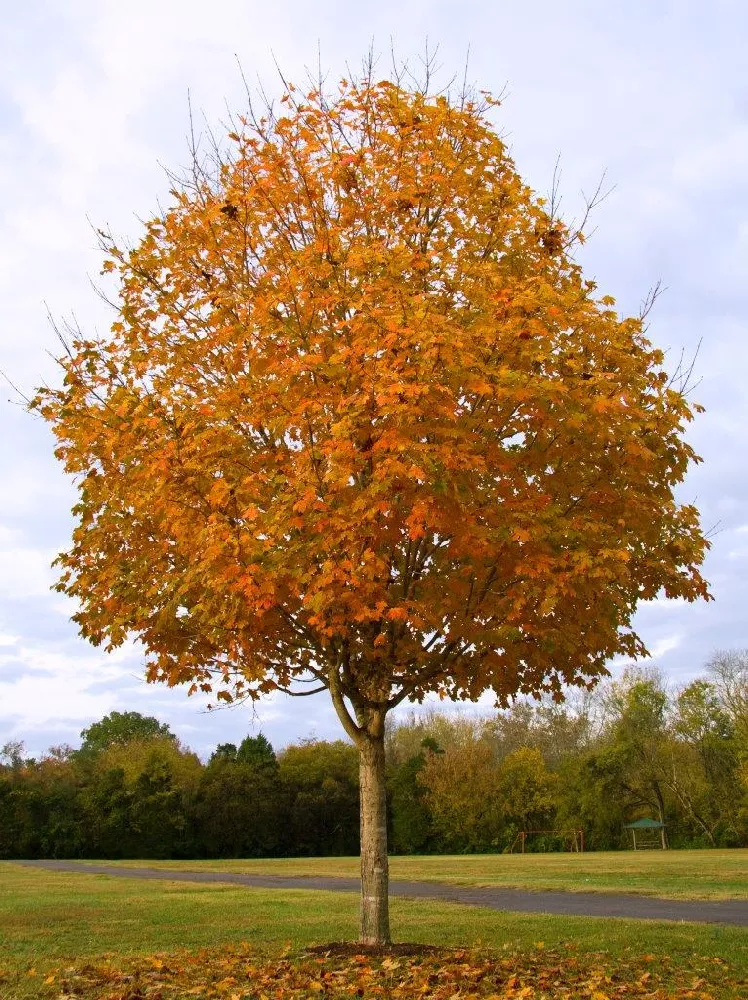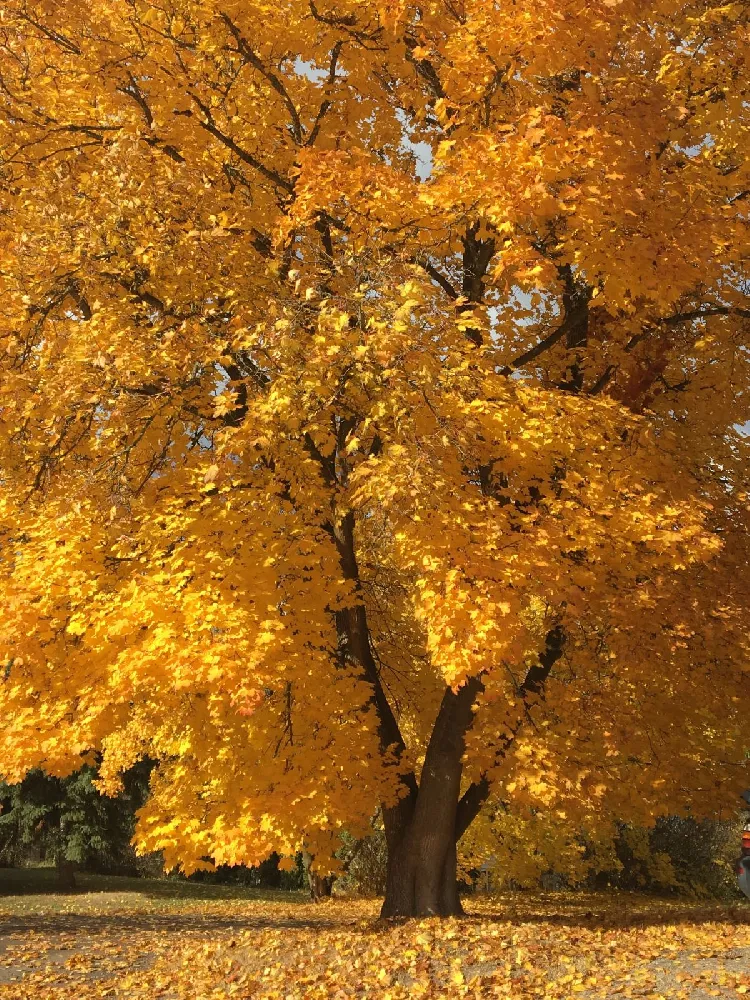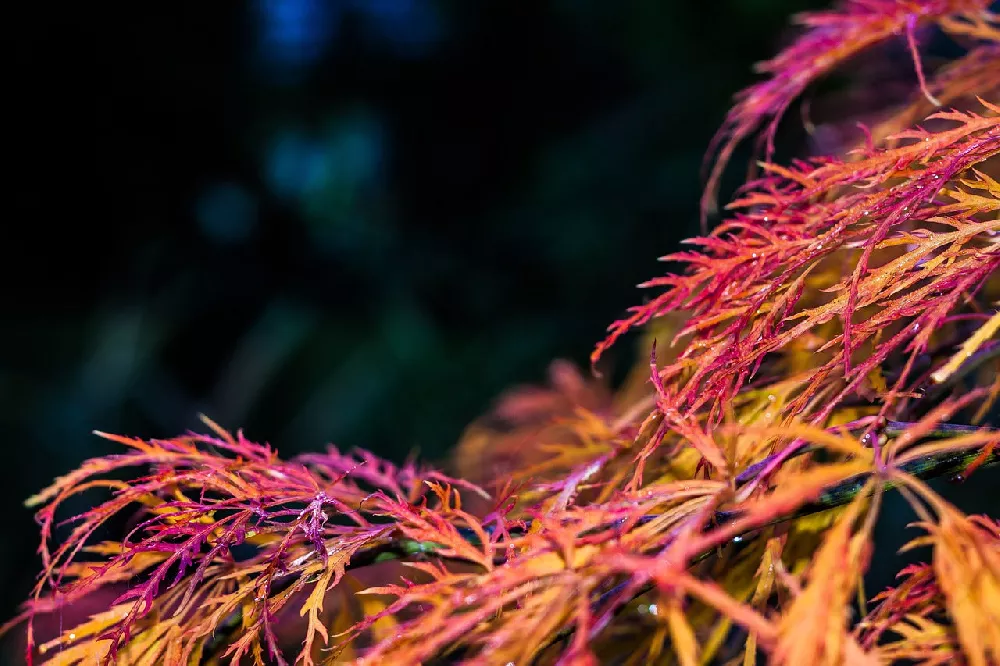- Home >
- Maple Trees >
- Sugar Maple Tree
Sugar Maple Tree for Sale - Buying & Growing Guide
- Ships in 1-2 days
- 1-Year Warranty Eligible
- Pots or accessories are not included unless specified in the product options.
Shipping Details:
Once your order is shipped, you’ll receive an email with a tracking number and estimated delivery date. Most orders ship immediately, but some items are seasonal and may only ship in spring or fall. These products are noted on the website.
North Americans love Sugar Maple Trees so much that four states in the U.S. proclaimed it a state tree, and Canada chose it as their national tree. It is easy to understand the appeal. Parts of the tree have been used for sugar, dyes, furniture, medicines, and soaps for centuries. This tree has reliable fall color that shows off gorgeous orange, red, and yellow fall leaves. Here is why you should consider Sugar Maple Trees for your yard:
- Sugar Maples add instant beauty and interest to any landscape.
- Sugar Maple Trees have twice the sugar content of other maple varieties.
- Valued for their versatile hardwood, they are an essential timber tree.
Plant Care
Sunlight

Sugar maples need at least 4 hours of direct sunlight per day.
Watering
Water regularly during the first year. Once established, sugar maples like moist but not wet soil.
Fertilizing

Fertilize young trees lightly with a balanced, slow-release fertilizer. Mature trees don't need fertilizing.
Planting and Care
Planting instructions
Choose a wide-open space with plenty of sunshine and fertile, well-drained soil. Slightly acidic to alkaline soil is tolerated, but any salt in the soil will destroy your maple tree. It is not a good candidate along streets or roads where salt is used as a deicer in the winter.
On a cool day in early fall or winter, dig a hole two to three times bigger than the root ball’s diameter, and deep enough so that the root flare is level with the ground. Place the tree in the hole while backfilling with the original, or amended, soil. Tamp the soil down to remove air pockets as you go. Once you have backfilled to a level that’s equal to the top of the root ball thoroughly water the tree.
Watering and nutrients
Sugar Maple Trees are fairly drought tolerant, but like regular watering during the dry months. Young trees do not like heat or being thirsty, so water well until established. They want their soil moist but never soaking wet. Form a ring of mulch around the base of the tree, but not touching the trunk. Mulch can help retain moisture during dry periods. Many maple tree farmers set up regular irrigation systems.
Young Sugar Maples enjoy light fertilizer feedings, while mature trees rarely need them. Soil tests can determine any deficiencies your soil may have.
Pollination
The Sugar Maple Trees flower in April and May. Bees visit Sugar Maple blossoms as soon as the first greenish-yellow flower appears. It is believed that the wind pollinates the trees, not the bees. The flowers grow pairs of winged seeds that mature in early fall.
Pruning
Pruning Sugar Maple Trees is best undertaken by a professional for safety reasons and for the health of the tree. The sap under the tree’s bark is usually lowest in the hot summer months. Pruning then will cause the least amount of stress and sap “bleeding.” Do an initial shaping on young trees under five years old. Mature trees will benefit from maintenance pruning. This entails removing any crossing, dead, or diseased branches.
Pests, diseases, and animals
Many insect pests like to call Sugar Maple Trees home. These include a variety of aphids, caterpillars, and moths. Sapsuckers, and leaf miners, can also cause minor damage. Cankers, rots, sapstream, and wilts are the most common diseases affecting maple trees. Close monitoring and regular inspections of your trees can help keep many of these pests at bay. It’s also a good idea to do a fall cleanup to get rid of overwintering fungal spores on fallen leaves.
Several animal species will take more than their fair share from your maple tree. These browsers include moose, snowshoe hares, and white-tailed deer. Flying, gray, and red squirrels all enjoy munching on the buds, leaves, seeds, and twigs of the Sugar Maple. One of the most destructive pests is not necessarily the largest. A single porcupine will girdle a tree by devouring much of the bark. Physical barriers are the easiest way to deter most of these animals and keep the peace. Chicken wire or hardware cloth encircling the truck will help protect your young tree during its sapling stage.
Harvesting
It usually takes about 30 to 50 gallons of Sugar Maple sap to cook up one gallon of pure maple sugar. Harvesting requires tapping the tree and allowing the sap to drip out into a bucket attached to the tree’s trunk. The Sugar Maple sap is then left to evaporate in large pans, or boiled down, to create maple syrup as you know it. Do not start trying to harvest the sugar from your trees until they are at least 12 inches in diameter. Twelve inches is the approximate size of a tree that is 30 years old or more.
FAQs
What are the benefits of adding a Sugar Maple to my yard?
An obvious answer is year-round visual interest. The shade a Sugar Maple Tree provides in the summer heat is a definite bonus for any landscape. Early spring flowers provide nectar for insects and birds. Cavities in the trees house a wide range of birds, including many songbirds and woodpeckers.
In what areas do Sugar Maple Trees grow best?
While it is possible to grow Sugar Maple Trees in USDA hardiness zones 3 through 8, the colder zones will have the most success. Maple trees need freezing temperatures for dormancy and to produce sugar. USDA hardiness zones 7 through 8 often do not have enough of the freezing and thawing cycles needed for sugar production. The trees still thrive and sport lovely fall foliage. They just will not give you gallons of maple sugar in the southern climates.
How much room does a Sugar Maple need?
Happy, healthy, Sugar Maple Trees need ample room to spread out, and will not tolerate any crowding. Young trees grow from 12 to 24 inches each year. A mature Sugar Maple Tree can reach heights of over 75 feet, with a canopy spreading up to 50 feet in diameter. Check for obstructions above where your tree will live for the next several hundred years. You should also take into account the fact that grass and other plants may not grow well under the shade of a mature Sugar Maple Tree.
Compare Similar Products
Customer Reviews
 Looks hood but not putting on leaves
Looks hood but not putting on leavesReceived in perfect shape. Planted but not leafing out yet.
 Easy purchase
Easy purchaseThis was a very easy purchase and the tree came in a sturdy package. The tree was healthy and larger than expected










